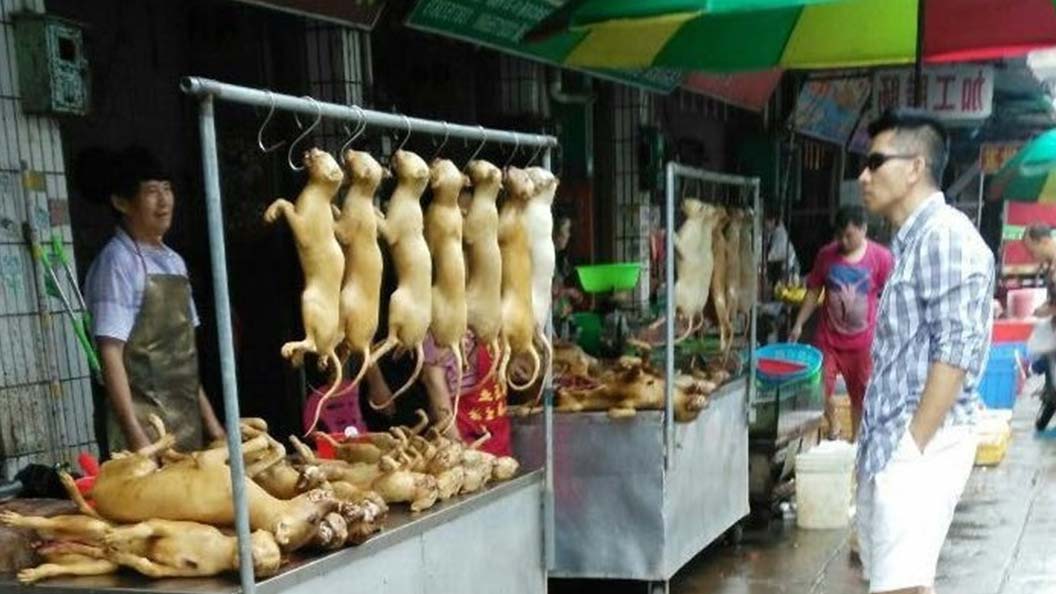China’s Wildlife Market, Trade and Consumption: Debunking Misperception and Falsehood
Not trying to deny the existence of intentional misrepresentation by some journalists, I believe there is a considerable confusion on the part of Western media regarding wet markets in China.
Peter J Li, Ph.D.
Associate Professor of East Asian Politics University of Houston-Downtown
26/05/2020

Towards the end of March, China began to emerge slowly from the two-month lockdown imposed by the Chinese authorities in order to contain the Covid-19 pandemic. While Wuhan and other cities in Hubei province, the epicenter of the global public health crisis, were yet to be “liberated,” cities and rural townships in other provinces loosened confinement requirements.
Businesses started to reopen. The reopening of economic activities attracted worldwide attention. Media reports on the resumption of wet markets were particularly disturbing to the worldwide audience. People around the world have a legitimate reason to question the reported reopening of Chinese wet markets.
“In ancient China and in the country’s recent past, there were no such wildlife markets”

It was these markets that triggered SARS (severe acute respiratory syndrome) in Guangdong, China in 2002-2003 and the Covid-19 in Wuhan. Noticeably, the reported wet market resumption elicited a wave of criticism from politicians, opinion leaders and media celebrities. Not trying to deny the existence of intentional misrepresentation by some journalists, I believe there is a considerable confusion on the part of Western media regarding wet markets in China. Additionally, the perceived pervasiveness of wildlife consumption in China seems to be widely accepted in the West.
There are two kinds of wet markets in China. The more common and traditional is livestock wet market typically residing inside a big marketplace. This part of the market for selling live chicken, pigeons, ducks or other small animals takes up no more than 5% of the total business space of a marketplace where there are also sections for fresh vegetables, dried and preserved foods, frozen meats or regular meat, seafood and fish. Livestock wet markets in China account for no more than 5% of the poultry sales as a result of the invasion of Western style supermarkets and other food retail stores. The other is wildlife wet market that arose in the last 40 years. In ancient China and in the country’s recent past, there were no such wildlife markets. In comparison, wildlife wet markets or wildlife markets were not commonly seen. They were concentrated in the country’s southern, southwestern and central regions.

It is true that China re-opened markets and businesses towards the end of March. What was also re-opened was the livestock wet market, not wildlife wet markets. There is a global concern that China’s current trade ban will not last. This concern is not baseless. China shocked the world and its own medical scientists in August 2003 when it re-opened wildlife trade barely two months after the end of SARS.
In retrospect, the re-opening was not a surprise. The decision was result of the failure of the Chinese leadership in understanding that China’s wildlife industry with a concentration of a large number of wild caught and captive bred animals in close proximity to one another on the farm, on the road and on the markets would be a hotbed of future outbreaks of pandemics. The aggressive lobbying activities by the country’s wildlife business interest also contributed to the lifting of the trade ban. China’s wildlife businesses were an interest group with an oversized influence. Its ability to impact wildlife policymaking came largely from its ability to control public discourse on wildlife.
“The world has focused too much attention on wildlife wet markets”
Representatives of the wildlife business interest have long promoted wildlife farming as good for conservation, good for “saving people’s life” and good for poverty reduction, claims that are largely baseless. They have succeeded in convincing the society and the Chinese government that wildlife industry serves the state’s political objectives. It is an industry that should be praised rather than restricted or banned.
Since reopening in August 2003, China’s wildlife industry has expanded greatly. By the end of 2016, it had become an operation with an annual revenue of 520 billion yuan ($77 billion), more than double the size of the GDP of North Korea in the same year. Wildlife farming in China has five components: breeding for fur, for exotic food markets, for Traditional Chinese Medicine (TCM), for display and pets, and for laboratory use.
While China’s current trade ban only covers the part of the breeding for the exotic food markets, the other components are no less a risk of pandemic outbreak. Chinese public are calling for the government to continue the current trade ban and to extend the ban to the other four components. Unsurprisingly, the wildlife business interest has not sat back. It has launched a fierce lobbying activity to get the trade ban lifted. They have claimed that wildlife breeding for the exotic food markets is a response to the “demand for wild animal meats of the Chinese people” and that captive bred wild animals are safe.
Wildlife consumption did exist in ancient China among a small number of people, as did in other parts of the world. But, wild animal meats have never been part of China’s mainstream food culture. Wildlife breeding for the exotic food markets never existed in ancient China or in recent past. People in China have never grown up eating rat meat, snake meat or pangolin soup. In fact, these wild animal meats have never been the food choices of the majority of the Chinese.

A recent study of Chinese wildlife consumption found that none of the 212 families participated in the study had wild animal meats in their refrigerators. Wildlife breeders and traders’ claim that they are producing to satisfy the demand for wild animal meats from the people is false. Like the rest of the world, Chinese food culture attaches importance to a balanced diet and ingredients of food that are morally acceptable besides other nutritional and cultural considerations.
Wild animal meats are not the food prepared in the kitchen of an average Chinese household, not that they cannot afford them. Exotic foods are typically served in restaurants at a much higher price to eaters who want the bragging rights from eating the most shocking, exotic and even most endangered species. Or, they go to these restaurants to host business partners or simply surprise their family and friends.
“No country should have complacency to believe that zoonotic diseases are country or culture specific”
The world has focused too much attention on wildlife wet markets. However, wildlife wet marketing is only one of the four areas of the wildlife industry that are equally dangerous. China has hundreds of millions of wild animals in captive breeding facilities. These animals are often mixed with wild caught individuals thus bringing viruses from the wild into captive facilities.
Long-distance transport is the second area of potential epidemic outbreak. Live transport across provincial boundaries can take days on the road in a continental sized country, causing enormous stress on the animals thus undermining their immunity system. The majority of the animals are then sent to restaurants to be slaughtered and processed for food, a place that sees different animals slaughtered on the premise, a hotbed for cross infection and virus mutation. A similar condition for viral transmission among the animals is also available on the wildlife wet market. Therefore, the entire industry of wildlife exploitation is a potential public health risk.
Seeing Covid-19 as a Chinese virus does not make the world a safer place. Pandemics like Covid-19 or SARS can happen anywhere as long as wild animals are exploited. Seeing Covid-19 as a China or culture specific problem can blind us to the potential sources of pandemic outbreaks in our own backyard. It is important that we take a look if we have business operations that house a large number of wild animals against their nature and for our selfish interest; if we have wildlife trade that brutalizes and enslaves animals; if we have exotic food markets that threaten wild population; and if we are invading the natural habitats of wildlife permanently as a result of urban expansion or as hunters for trophies and for fun.
“China’s wildlife businesses were an interest group with an oversized influence”
A lot needs to be done to make the world safer. China has a global responsibility to shut down the wildlife markets for good. And this trade ban should be extended to all other components of the wildlife business operation. Additionally, China should consider phasing out the livestock wet markets, a shopping venue that serves a dwindling number of people. These actions are enforceable in China. The claim that Chinese people demand to eat wild animal meat is false. It is a falsehood perpetuated by the country’s wildlife traders. Livestock wet markets only serve a small number of the older generations.
Chinese actions alone are not enough. No country monopolizes the outbreaks of epidemics. No country should have complacency to believe that zoonotic diseases are country or culture specific. It is time that the entire world give the natural world the respect it deserves. Wild animals belong in the wild. Wildlife exploitation is not only ecologically damaging but morally disgraceful. Let’s behave ourselves for our own safety and for the well-being of all other nonhuman individuals who are the equal inhabitants of Mother Earth.



